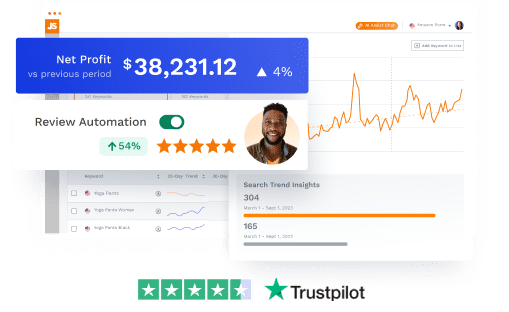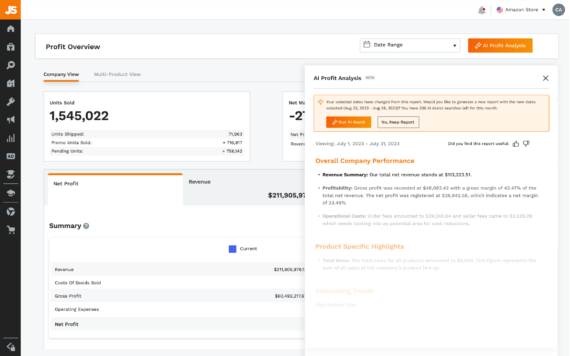A big determinant of success as an Amazon seller is how well you can manage your inventory. With proper inventory management skills come reduced storage fees and inventory costs, and increased overall profitability.
Amazon has a built-in metric to help sellers gauge their inventory performance over time: the Inventory Performance Index, or IPI. The IPI is designed to help sellers fully understand the health of their inventory, so they can be as efficient and as profitable as possible.
So what exactly is the Inventory Performance Index score, how is it measured, and how does it affect you? We will go over all of this and more.
What is the Inventory Performance Index score?
According to Amazon, the IPI score measures how efficient and productive you are in managing your FBA inventory. It ranges from 0 to 1,000 — the higher, the better. Here’s how Amazon displays your IPI in the inventory dashboard in Seller Central.

Amazon sets a minimum threshold score that all sellers must meet. If you fall below that threshold, Amazon will set storage capacity limits on your account until you can improve your inventory health. At the time of writing, the Inventory Performance Index (IPI) threshold is 400; anything above 400 is considered a “good” IPI score.
Read more:
There are a few key factors that influence your IPI score, which can affect your FBA capacity limits:
- Maintaining a balance between sold and available inventory, without excess stock
- Avoiding long-term storage fees
- Resolving problems with your listings
- Keeping popular products in stock to meet customer demand
Essentially, Amazon uses the IPI score to ensure that their own warehouse space is used efficiently; that is, the products sellers are storing in FBA warehouses are products that buyers want, and that won’t sit around unsold for long periods of time.
What influences your IPI score?
While Amazon does not tell sellers exactly how IPI scores are calculated, they do disclose the top factors that influence your score, along with recommendations on how to address them.
These major factors include the amount of excess inventory you have, your sell-through rate, the amount of stranded inventory you have, and your levels of in-stock inventory.
Excess Inventory
One of the the biggest factors that affects your IPI score is your excess inventory. Remember, Amazon wants to serve as a fulfillment center, not a long-term storage facility, and prefers that FBA products move from the warehouse floor to customers’ doorsteps relatively quickly.
Amazon deems an item as “excess” or “overstock” if the amount of FBA inventory exceeds a 90-days supply, based on its forecasted demand. A good guideline to follow is to maintain roughly 30-60 days’ worth of supply to avoid overstocking. Amazon gives sellers a good indication of product demand and restock recommendations in the FBA Dashboard.
If you have excess inventory, Amazon will show you how many units are overstocked, along with recommendations as to what to do with that excess inventory.

Amazon will also provide the following three metrics to further understand your excess inventory:
- “Excess units is the number of units where it costs you more to do nothing and pay the storage fees instead of taking an action like marking down the price or removing inventory. This value is based on the customer demand of your product and product costs (including fees and cost of goods).
- Estimated total storage cost is the sum of estimated costs you would incur if you take no action and leave your inventory idle in the fulfillment center over a 3-year period. This includes monthly storage fees and aged inventory surcharge..
- The Reduce excess inventory button shows how many SKUs you have with excess inventory. Click the button to go to Manage Inventory Health and take action on the inventory.”
FBA Sell-Through Rate
Your sell-through rate is calculated as your units sold and shipped over the past 90 days divided by the average number of units on hand at an FBA warehouse during that time period.
If Amazon believes your sell-through rate is low, they’ll show you the steps you can take to improve. This will help you control how much you pay in storage fees and will prevent you from getting hit with long-term storage fees.

If you click on “Improve sell-through” it’ll bring you to the “FBA Inventory” page.
You can view multiple metrics such as inventory age, estimated excess units, and estimated aged inventory surcharge.
All the way to the right, you’ll see their suggestion for improving the sell-through rate. In this example, Amazon is advising us to create an outlet deal. If I click on the drop-down arrow, I can view more suggestions, like “Improve keywords” and “Create a removal order.”
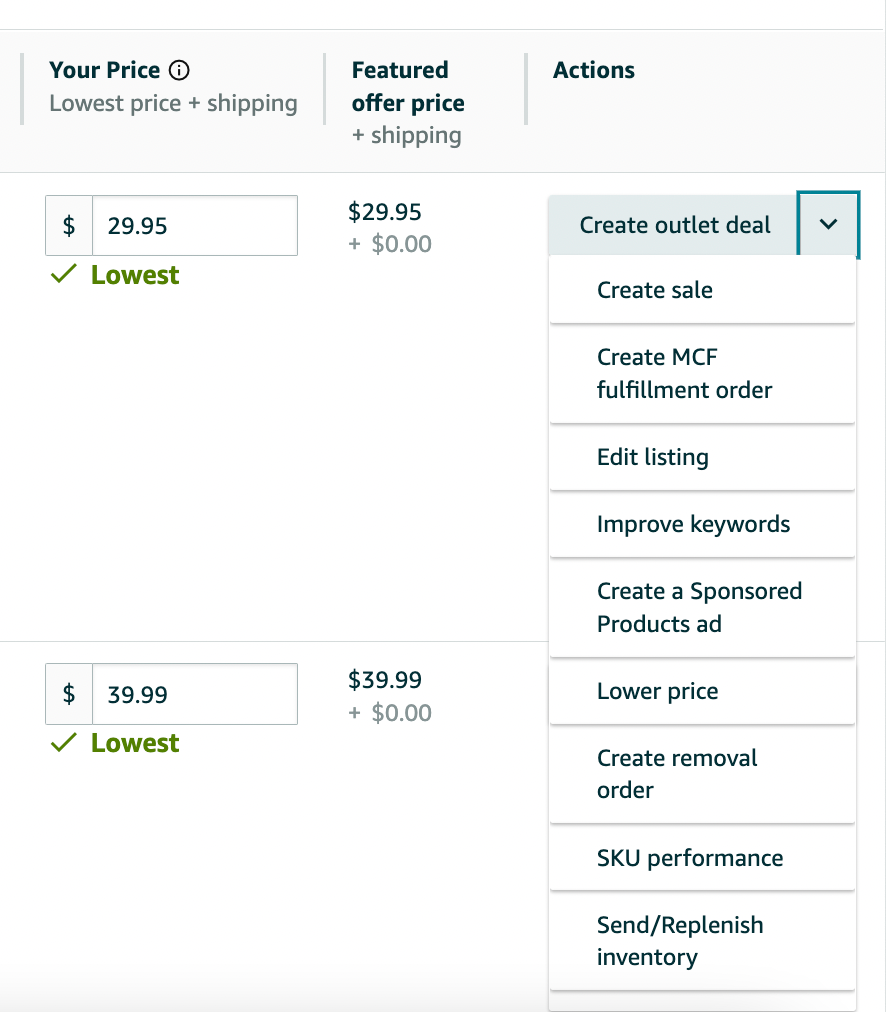
Stranded Inventory
Stranded inventory is when you have inventory stored in Amazon’s warehouse, but there’s no longer an active offer for the product due to a listing problem. That means customers will not be able to purchase that inventory, resulting in lost sales and storage fees.
Luckily, this is pretty easy to resolve, as Amazon will show you exactly how many units are stranded and how to fix them.
If you have stranded inventory, you’ll see an alert and a “Fix listings” button in your FBA Dashboard.

If you click on “Fix listings,” you’ll navigate to the “Fix stranded inventory” page. Amazon will list the products that are stranded, indicate how many units are stranded and if they have an auto-removal date, the reason they were stranded, and the option to relist the units.
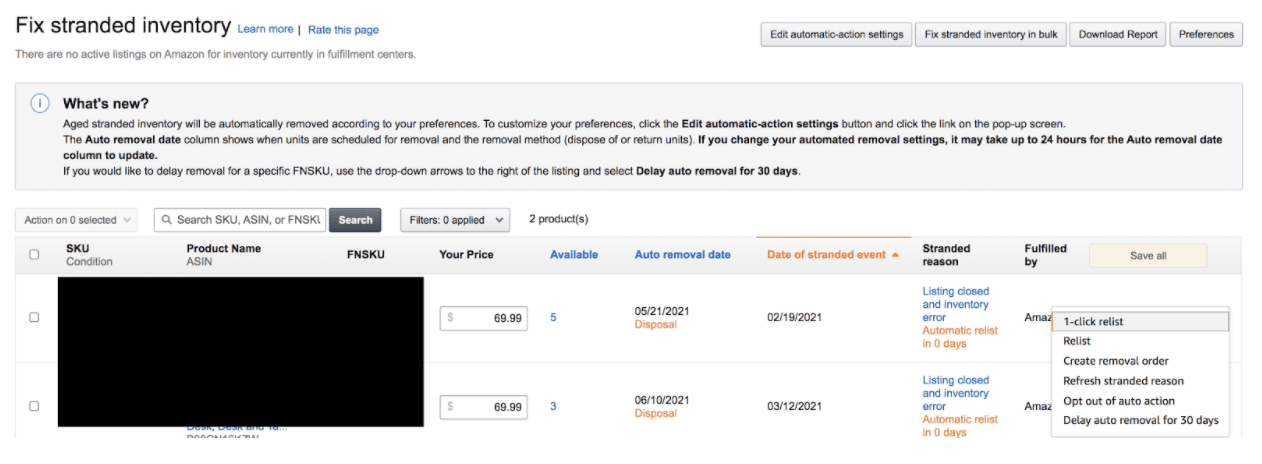
In-Stock Inventory
Amazon tracks your performance based on how well you keep popular ASINs in stock. While this metric does not negatively affect your IPI score, it can improve it.
To reinforce the importance of staying well-stocked, Amazon will estimate the number of FBA sales you missed out on over the past 30 days, based on forecasted sales on the days when you were out of stock.
If the product you are selling is non-replenishable, you can exclude it from your IPI score. So if you sell a limited edition product, a product that is no longer in production, or a one-off retail arbitrage item, you can mark it as “non-replenishable” in Restock inventory to protect your IPI score.

How to improve your IPI score
Amazon has a few general recommendations for maintaining a healthy inventory performance.
1. Improve your sell-through rate
Amazon wants sellers to maintain a healthy 90-day rolling sell-through rate that places you in the “green” on the IPI graph. To view the sell-through rate for each of your active products, visit the “FBA Inventory” page in Seller Central. You’ll be able to sort by products with the lowest sell-through and view recommendations to improve it.
You can improve your sell-through rate by:
- Running a sale to encourage conversions
- Advertising your products
- Sharpening your keyword targeting and SEO strategy
- Growing your product reviews
- Creating compelling listing images, infographics, and product video
Use Jungle Scout’s Listing Builder with AI Assist to help you build an optimized Amazon listing in a fraction of the time.
2. Reduce overstocked inventory
This one is pretty obvious: Amazon does not want to store products that do not sell. Visit the “FBA Inventory” page to see recommendations on how to deal with excess inventory. Amazon may also recommend you set up an “Amazon Outlet” deal to quickly sell overstocked and out-of-season products.
3. Prevent long-term storage fees
Make sure you remove any inventory before it reaches 365 days in FBA. If your inventory is over 365 days old, you will be hit with an aged inventory surcharge. You can create a removal order or even have Amazon destroy your inventory.
4. Be proactive with listing issues
If you have stranded inventory or any other listing issues preventing customers from purchasing, take care of them in a timely manner.
Generally, you should:
- Regularly check your stranded inventory percentage so you can fix the issue before you start paying more in storage fees.
- Maintain a balanced inventory level between sold and on-hand inventory
- avoid excess inventory (above a 90-day supply, based on your sales forecast)
- keep your most popular products at the proper inventory levels (between 30-60 days of supply)
Make sure you frequently check your inventory dashboard to be sure you’re on the right track.
What if my IPI score dips below the threshold?
If your IPI score falls below the minimum threshold, it will affect your FBA Storage Capacity Limits. You can check your Capacity Monitor in your FBA Dashboard.
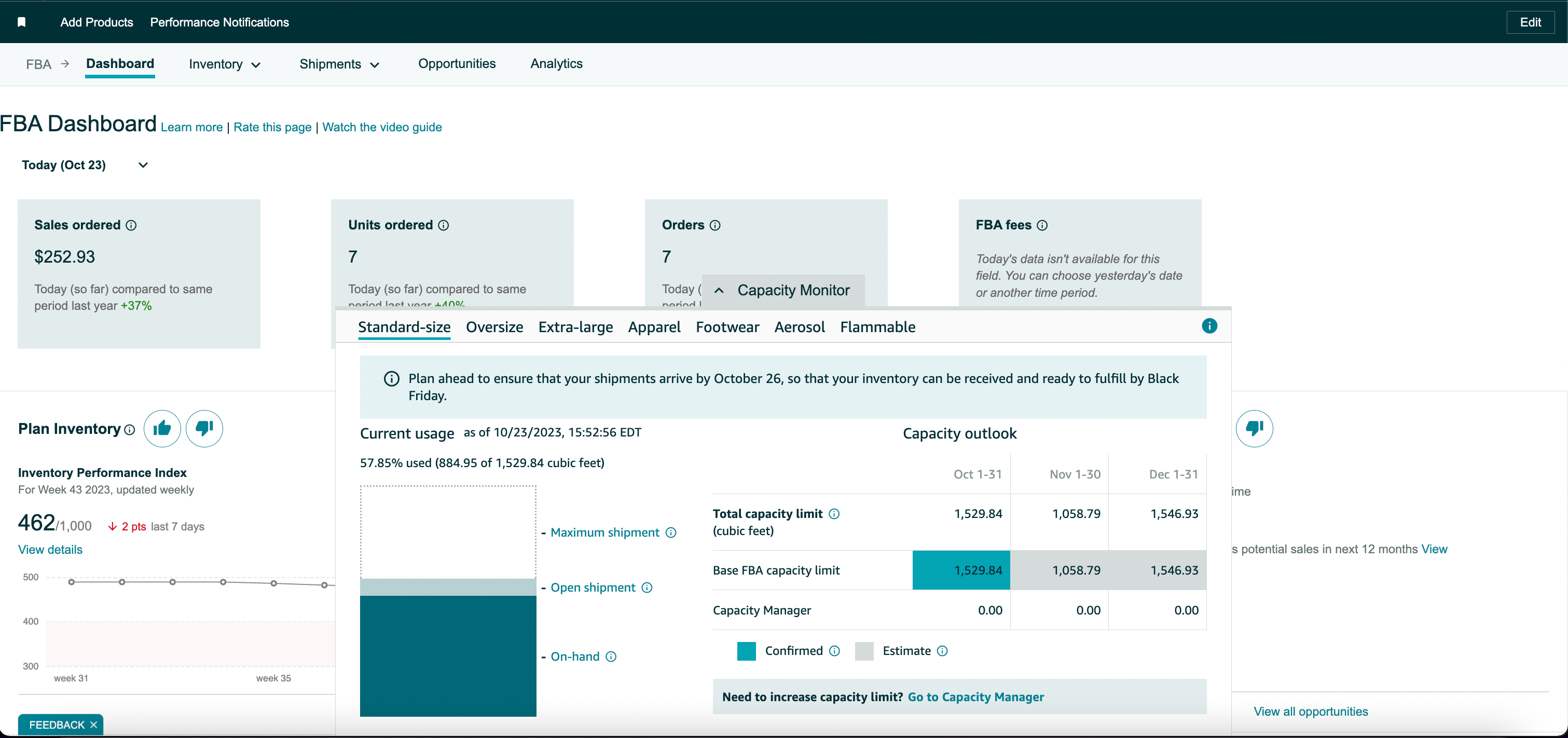
Amazon Just Updated Its FBA Storage Capacity System, and Here’s How it Affects You
If your IPI score is below the threshold and you have low restock limits and storage volume, you can also look into using a third-party fulfillment center to prevent overstock in FBA or to fulfill FBM orders.
Other frequently asked questions on IPI
Do new ASINs affect my IPI score?
No, new products that are up to 90 days old do not impact your IPI score. This means if you launch a new product and it doesn’t sell quickly within the first 90 days, your IPI won’t be affected until after that 90 day period.
Are removals or liquidations included in IPI?
No. If you have inventory that is overstocked and you place a removal order or liquidation request in Seller Central, that inventory no longer affects your IPI score.
IPI on Amazon: Final thoughts
If you can properly manage your inventory, you are well on your way to becoming a successful and profitable Amazon seller. If you are a brand new seller and are unsure of what the demand will be, send in a small amount of FBA inventory to test your product’s sales volume on Amazon.
It takes practice and patience to figure out exactly what the right inventory levels are for each ASIN you sell. Pay attention to the metrics Amazon provides to avoid any overstock.
Jungle Scout also has a powerful tool called the Inventory Manager that will accurately predict how much stock you’ll need for your FBA business and when to order it.
Do you have any more questions about the IPI score? Let us know in the comments.
Brian Connolly is an Amazon seller, ecommerce expert, and writer for Jungle Scout. He lives in the New Jersey Shore area with his wife and cat. When he isn’t writing advice online for aspiring and experienced Amazon sellers for Jungle Scout, he spends his free time boating, fishing, and selling boating-themed items on his Amazon business.


